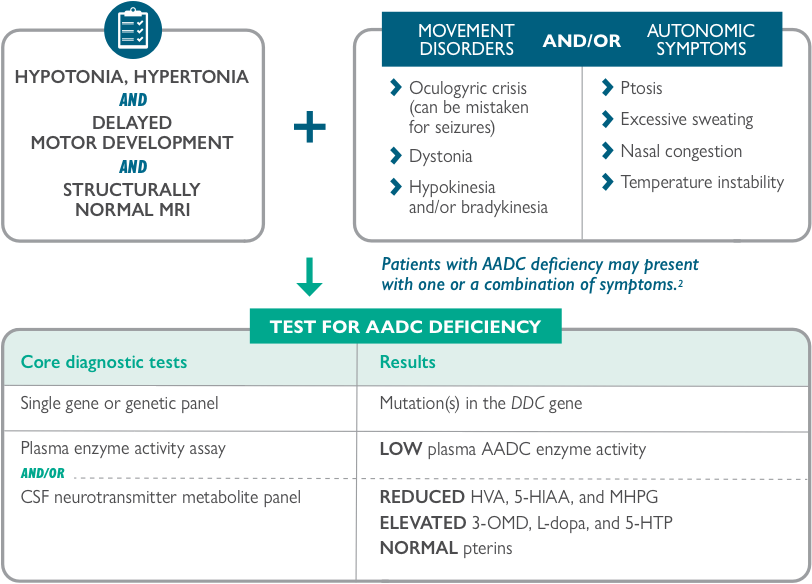Accurate identification can help improve the care and management of patients with AADC deficiency1,2
Diagnostic pathway for suspected AADC deficiency2,3

Adapted from Himmelreich 2019.2
3-OMD=3-O-methyldopa; 5-HIAA=5-hydroxyindoleacetic acid; 5-HTP=5-hydroxytryptophan; CSF=cerebrospinal fluid; HVA=homovanillic acid; L-dopa=L-3,4-dihydroxyphenylalanine; MHPG=3-methoxy-4-hydroxyphenylglycol; VLA=vanillactic acid.
Other tests that may be helpful include4-7:
- Blood level measurement of 3-OMD
- Urinary organic acid analysis
Current consensus guidelines recommend performing a CSF neurotransmitter metabolite panel and/or plasma AADC enzyme activity assay in combination with genetic testing to confirm a diagnosis of AADC deficiency.3
WATCH: Which tests are appropriate for AADC deficiency?
Keith Hyland, PhD, reviews diagnostic tests that can confirm an AADC deficiency diagnosis
- View the paper “Consensus guideline for the diagnosis and treatment of aromatic l-amino acid decarboxylase (AADC) deficiency” written by representatives of the International Working Group on Neurotransmitter Related Disorders (iNTD) and published in the Orphanet Journal of Rare Diseases, which outlines key symptoms as well as recommended strategies for the diagnosis and management of AADC deficiency
- Review the paper “Aromatic amino acid decarboxylase deficiency: molecular and metabolic basis and therapeutic outlook” published in the journal of Molecular Genetics and Metabolism, which outlines hallmark symptoms of AADC deficiency and also discusses recommended diagnostic tests, current strategies for management, and potential new treatment options for AADC deficiency
